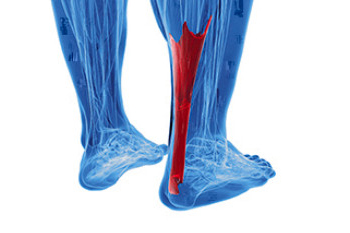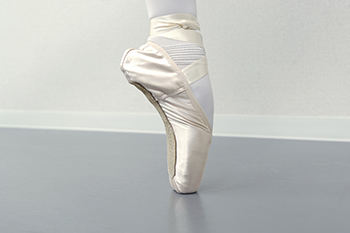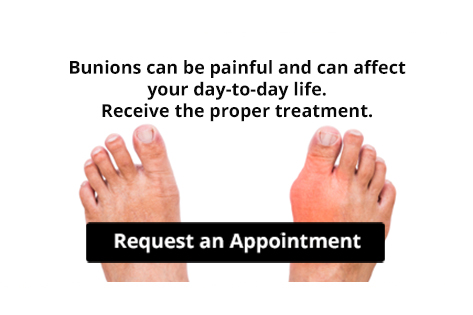Items filtered by date: October 2022
Dealing With Achilles Tendonitis

The Achilles tendon connects the heel to the bones of the leg. When it becomes irritated or swollen, inflammation may set in that causes a painful condition known as Achilles tendonitis. Other symptoms include stiffness and soreness in the heel, a crackling sound when the ankle moves, pain when the foot is extended, and weakness in the affected leg. Achilles tendonitis is common among athletes whose sport or activity puts particular stress on the heel, such as running, jumping, basketball, dancing, skiing, or figure skating. A walking boot or cast may be necessary for stability, and custom orthotics may help to keep the injury from recurring. In severe cases, surgery may be required. Seeing a podiatrist is a wise way to find out the best treatment options to combat this condition.
Achilles tendon injuries need immediate attention to avoid future complications. If you have any concerns, contact one of our podiatrists of Toms River Podiatrist . Our doctors can provide the care you need to keep you pain-free and on your feet.
What Is the Achilles Tendon?
The Achilles tendon is a tendon that connects the lower leg muscles and calf to the heel of the foot. It is the strongest tendon in the human body and is essential for making movement possible. Because this tendon is such an integral part of the body, any injuries to it can create immense difficulties and should immediately be presented to a doctor.
What Are the Symptoms of an Achilles Tendon Injury?
There are various types of injuries that can affect the Achilles tendon. The two most common injuries are Achilles tendinitis and ruptures of the tendon.
Achilles Tendinitis Symptoms
- Inflammation
- Dull to severe pain
- Increased blood flow to the tendon
- Thickening of the tendon
Rupture Symptoms
- Extreme pain and swelling in the foot
- Total immobility
Treatment and Prevention
Achilles tendon injuries are diagnosed by a thorough physical evaluation, which can include an MRI. Treatment involves rest, physical therapy, and in some cases, surgery. However, various preventative measures can be taken to avoid these injuries, such as:
- Thorough stretching of the tendon before and after exercise
- Strengthening exercises like calf raises, squats, leg curls, leg extensions, leg raises, lunges, and leg presses
If you have any questions please feel free to contact our office located in Toms River, NJ . We offer the newest diagnostic tools and technology to treat your foot and ankle needs.
Types of Juvenile Arthritis

Arthritis that develops in a child is known as juvenile idiopathic arthritis (JIA.) Juvenile means under the age of 16, idiopathic means the cause is unknown, and arthritis indicates inflammation, swelling, and pain in joints, including the ankle. While the cause is unknown, it is believed that genetics may play a role in the development of juvenile idiopathic arthritis. However, it is not considered to be hereditary. The five main types of JIA are oligoarthritis, polyarticular, systemic onset, enthesitis-related, and psoriatic arthritis. Oligoarthritis is the most common type, and affects up to four joints, including the ankle. Polyarticular arthritis affects five or more joints, including the ankle, and generally appears in the same joint on each side of the body. Systemic onset arthritis, also known as Still’s disease, is the least common. It affects the joints but also causes widespread inflammation, high fevers, and swollen glands, among other symptoms. Enthesitis-related arthritis affects the ligaments and tendons that attach to the bones. Finally, psoriatic arthritis can infect multiple joints, but also causes a scaly skin rash. If your child exhibits pain, swelling, tenderness, redness and stiffness in the ankle joint, please consult with a podiatrist to determine the cause and discuss treatment options.
Making sure that your children maintain good foot health is very important as they grow. If you have any questions, contact one of our podiatrists of Toms River Podiatrist . Our doctors can provide the care you need to keep you pain-free and on your feet.
Keeping Children's Feet Healthy
Having healthy feet during childhood can help prevent medical problems later in life, namely in the back and legs. As children grow, their feet require different types of care. Here are some things to consider...
Although babies do not walk yet, it is still very important to take care of their feet.
Avoid putting tight shoes or socks on his or her feet.
Allow the baby to stretch and kick his or her feet to feel comfortable.
As a toddler, kids are now on the move and begin to develop differently. At this age, toddlers are getting a feel for walking, so don’t be alarmed if your toddler is unsteady or ‘walks funny’.
As your child gets older, it is important to teach them how to take care of their feet.
Show them proper hygiene to prevent infections such as fungus.
Be watchful for any pain or injury.
Have all injuries checked by a doctor as soon as possible.
Comfortable, protective shoes should always be worn, especially at play.
If you have any questions please feel free to contact our office located in Toms River, NJ . We offer the newest diagnostic and treatment technologies for all your foot and ankle needs.
Are Bunions Affecting Your Everyday Life?
What Is Os Trigonum Syndrome?

Os trigonum syndrome refers to pain in the back of the ankle bone (the talus), usually the result of overuse or trauma. The os trigonum is an extra bone that is connected to the talus by a band of fibrous tissue. It is congenital (present at birth) and In most cases, the extra bone fuses with the talus, causing no problems. Os trigonum syndrome is generally kicked off by an injury, such as a sprained ankle. It also may be caused by excessive downward pointing of the foot, and is common to dancers and soccer players. In such cases, the os trigonum gets caught between the ankle and heel bones, in a nutcracker-like effect, which induces pain. This can tear the fibrous tissue surrounding it and result in inflammation. Rest, ice and elevation are the first level of treatment, but injections of cortisone and taking anti-inflammatory medication may also be needed. The pain from os trigonum syndrome is often confused with Achilles tendonitis. Please see a podiatrist for a proper diagnosis and treatment plan.
Ankle pain can be caused by a number of problems and may be potentially serious. If you have ankle pain, consult with one of our podiatrists from Toms River Podiatrist . Our doctors will assess your condition and provide you with quality foot and ankle treatment.
Ankle pain is any condition that causes pain in the ankle. Due to the fact that the ankle consists of tendons, muscles, bones, and ligaments, ankle pain can come from a number of different conditions.
Causes
The most common causes of ankle pain include:
- Types of arthritis (rheumatoid, osteoarthritis, and gout)
- Ankle sprains
- Broken ankles
- Achilles tendinitis
- Achilles tendon rupture
- Stress fractures
- Bursitis
- Tarsal tunnel syndrome
- Plantar fasciitis
Symptoms
Symptoms of ankle injury vary based upon the condition. Pain may include general pain and discomfort, swelling, aching, redness, bruising, burning or stabbing sensations, and/or loss of sensation.
Diagnosis
Due to the wide variety of potential causes of ankle pain, podiatrists will utilize a number of different methods to properly diagnose ankle pain. This can include asking for personal and family medical histories and of any recent injuries. Further diagnosis may include sensation tests, a physical examination, and potentially x-rays or other imaging tests.
Treatment
Just as the range of causes varies widely, so do treatments. Some more common treatments are rest, ice packs, keeping pressure off the foot, orthotics and braces, medication for inflammation and pain, and surgery.
If you have any questions, please feel free to contact our office located in Toms River, NJ . We offer the newest diagnostic and treatment technologies for all your foot care needs.
Burn Blisters

Many people will develop a blister at one point in their lives due to repeated friction. For example, when wearing an ill-fitting pair of shoes, the material of the shoes might rub against the skin in an uncomfortable way, sometimes creating a blister. Burn blisters, however, develop not in response to friction but in order to protect an area of the skin that has been burned. For instance, a burn blister may develop on the foot after it has suffered a sunburn or second-degree burn of some kind. If you have a burn blister on your foot due to a second degree burn, seek out medical assistance immediately. This is especially true if you notice that there is swelling, redness, or pus around the blister. Of course, it is always important to resist the urge to pop a burn blister, because this increases the likelihood of developing an infection. Contact a podiatrist today for more information about burn blisters.
Blisters are prone to making everyday activities extremely uncomfortable. If your feet are hurting, contact one of our podiatrists of Toms River Podiatrist . Our doctors can provide the care you need to keep you pain-free and on your feet.
Foot Blisters
Foot blisters develop as a result of constantly wearing tight or ill-fitting footwear. This happens due to the constant rubbing from the shoe, which can often lead to pain.
What Are Foot Blisters?
A foot blister is a small fluid-filled pocket that forms on the upper-most layer of the skin. Blisters are filled with clear fluid and can lead to blood drainage or pus if the area becomes infected.
How Do Blisters Form?
Blisters on the feet are often the result of constant friction of skin and material, usually by shoe rubbing. Walking in sandals, boots, or shoes that don’t fit properly for long periods of time can result in a blister. Having consistent foot moisture and humidity can easily lead to blister formation.
Prevention & Treatment
It is important to properly care for the affected area in order to prevent infection and ease the pain. Do not lance the blister and use a Band-Aid to provide pain relief. Also, be sure to keep your feet dry and wear proper fitting shoes. If you see blood or pus in a blister, seek assistance from a podiatrist.
If you have any questions, please feel free to contact our office located in Toms River, NJ . We offer the newest diagnostic and treatment technologies for all your foot care needs.

